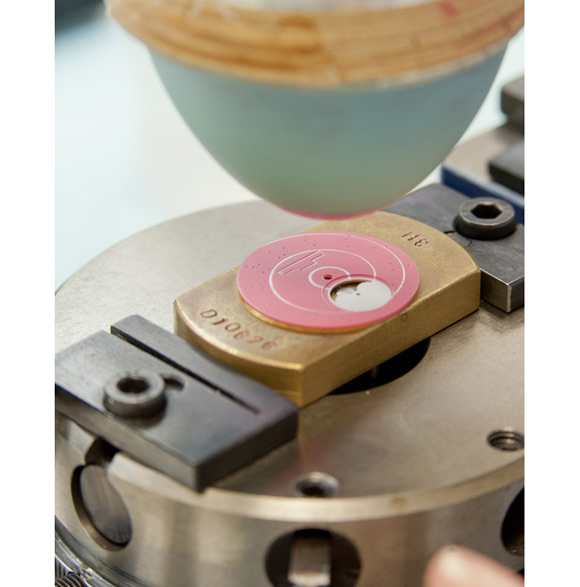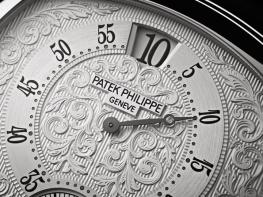The look of a Patek Philippe watch is largely determined by its dial. This keystone of watchmaking is an often under-appreciated component, and more perhaps than any other part of a watch, it really comes into its own when it is handcrafted. Automated and standardised techniques don’t allow for the level of quality and finish, or the richness of texture, that are so vital to a Patek Philippe watch. Whatever materials the dial is made of, only a succession of manual techniques can achieve results like these.
A dial is not just an object, it’s a microcosm, and its surface is dictated by the particular techniques applied to it. Even when its appearance is deceptively plain, it requires expertise and skills that can only be supplied by experienced hands. The 5235, for example, has an unusual appearance for a Patek Philippe watch: the majority of the dial is brushed, like a movement part would be, although the surface area is far greater. The outer ring is opaline, and the subdials are snailed. The markers and minutes track are then applied by transfer, and the three windows for the annual calendar display are bevelled and polished.

The same goes for the dial of the Nautilus. This model’s distinctive dial, with its stamped horizontal grooves, is hand-painted. For the model’s 40th anniversary, Patek Philippe produced a limited edition with a blue-painted gold dial set with baguette-cut diamonds, a process that can only be carried out by hand.
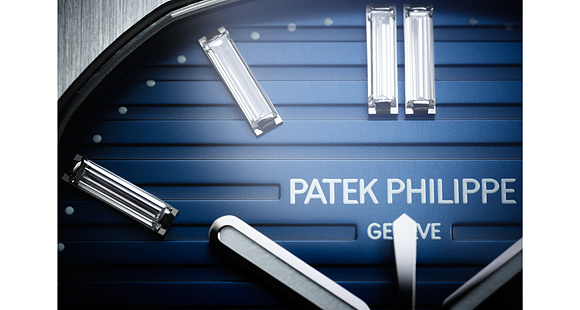
Even the stamping operation itself, while it is done by a machine, has to be guided by human hands. The brass plate is planed, and special feet are fitted and soldered to the dial by hand in preparation for the stamping. The Chiming Jump Hour Ref. 5275 (large photo at the top of the page) undergoes a similar process, then colour is applied to the tiny dots around the edge of the minute dial and to the Arabic numerals, which are also applied by hand.
For any dials that include precious materials and artistic crafts, the human touch is a vital element. A more noble alternative to stamping is guilloché. Here, a geometrical motif is carved into the thickness of the dial. Although this operation is done by a machine, the machine is not driven by electricity, nor does it function automatically. A rose engine lathe is powered and guided by hand, and controlled by eye. After this, the dial can be painted, gem-set or finished with printed transfers.
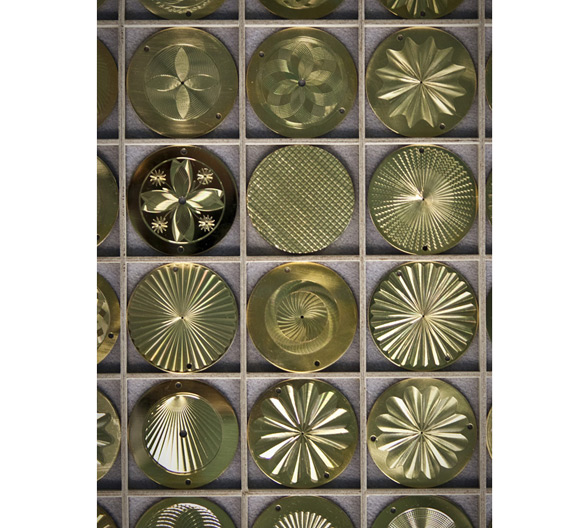
A dial that is to be set with precious stones generally starts life as a pre-perforated metal plate, but the setting itself is done by hand. A pusher is used to lever the metal back to hold the gems in place – gems which might weigh a fraction of a carat, and measure a fraction of a millimetre. The raised gold indices are also affixed to the dial by hand.
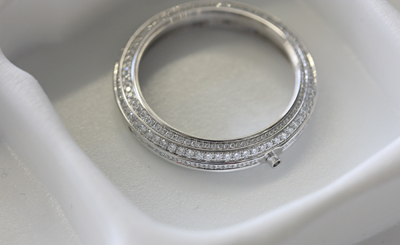
Patek Philippe is one of very few watchmakers who never stopped making dials out of enamel, using the most traditional techniques. Whether cloisonné, champlevé, monochromatic or multicoloured, enamelling is a house speciality, and the techniques are so specialised that they would be impossible to reproduce without a series of extremely delicate manual operations. The process of preparing the dials, delimiting the zones of colour and applying the enamel powder of the exact hue required is interspersed with successive firings in a kiln. At each stage, human eyes check over the entire surface, verifying the minutest details, ensuring that the colours are fired to the required degree of intensity, and that no defects have appeared.

This is particularly demanding in the case of Patek Philippe’s monochromatic grand feu enamel dials, in white, black or blue. Their perfectly uniform surface does not tolerate the slightest error. After each firing and polishing they are inspected under a loupe by experts. This is how Patek Philippe dials attain the exquisite levels of finish that the company demands, producing a quality that is evident at first glance.
